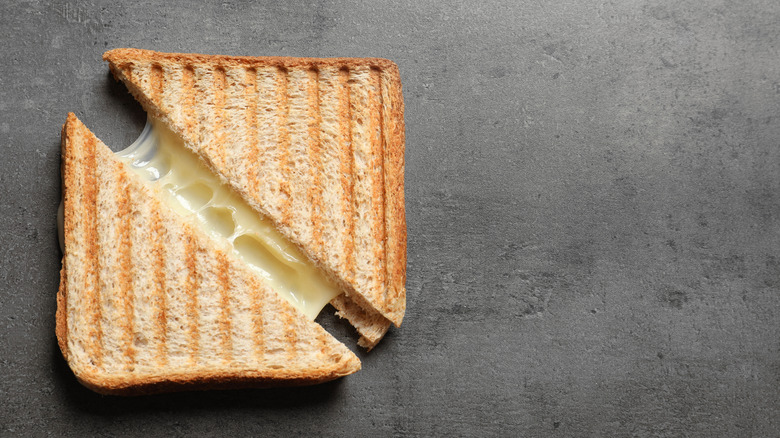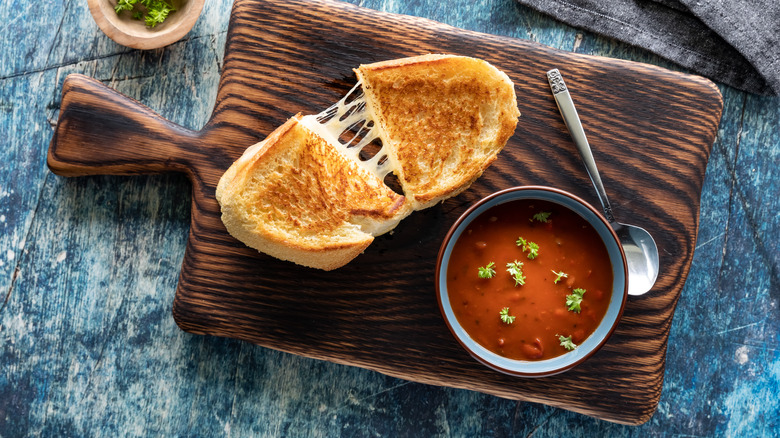This Type Of Pan Will Help You Make The Best Grilled Cheese
Grilled cheese is always having a moment. Cheese aficionados have been eating grilled cheeses since the 1920s, when the sandwich supposedly emerged as an inexpensive, but popular, form of sustenance (via The Committed Pig). All these years later, the grilled cheese remains America's ultimate comfort food. It can be dressed down for any children's menu or dressed up for gourmet purposes. Add a splash of citrus and some chives, and your sandwich gets a makeover.
Indeed, while you can never go wrong with a classic, cheddar-based grilled cheese, picking and choosing your favorite fillings is half the fun. If you're looking for a bit of a crunch, pair your sandwich with brie and apple. Or, to curb any and all cheese cravings, opt for a combination of swiss, cheddar, and provolone. Some recipes even swear by peanut butter as a game changer ... though this is one ingredient that may give pause to lovers of classic grilled cheese sandwiches.
No matter the direction in which you take your grilled cheese, you'll have the chance to get as creative as you'd please. One step, however, isn't worth changing. To truly master the art of the homemade grilled cheese, you'll have to keep your pan and its temperature consistent.
Use a non-stick skillet
According to Southern Living, a non-stick skillet primes your grilled cheese for success. This kind of pan not only prevents your grilled cheese from, well, sticking to the surface, but it also helps bread brown to your desired color. Plus, a non-stick skillet eases the process of flipping your grilled cheese — without the annoyance of it clinging to the pan.
Likewise, Martha Stewart claims that pan heat is the secret to any grilled cheese worth tasting. A griddle and cast-iron skillet are equally ideal for your next sandwich foray, so long as you set the stove to medium-low. Once your bread begins to brown, flip the sandwich over. You're halfway there.
While your grilled cheese is cooking, consider covering your pan with a lid. The cover helps keep heat in place and makes your cheese inclined to melt — faster. This shortcut will get your sandwich ready-to-eat in no time, though you may want a few extra minutes to warm up some tomato soup. There's no pairing quite like this cozy and comforting lunch.

